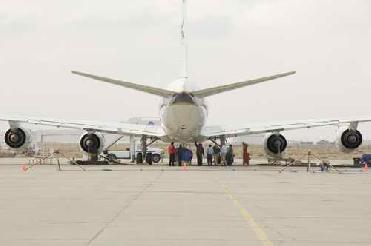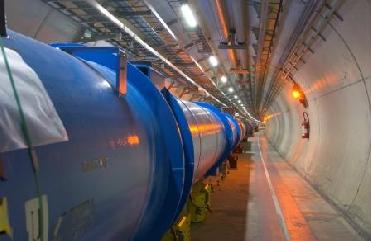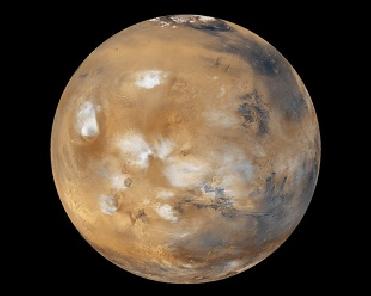
Test instrumentation is set up behind the inboard engines of NASA's DC-8 airborne science laboratory during alternative fuels emissions and performance testing at NASA's Dryden Aircraft Operations Facility in Palmdale, Calif. NASA image
WASHINGTON (BNS): Two non-petroleum based jet fuels are being tested by a team of scientists from NASA and other research institutes as part of the global effort to find an alternative fuel for commercial jets to get rid of persistent oil crisis.
Two synthetic fuels have been derived from coal and natural gas using the Fischer-Tropsch process – a chemical reaction in which a synthesis gas (mixture of carbon monoxide and hydrogen) is converted into liquid hydrocarbons of various forms. It produces synthetic petroleum which is used as a lubricant or fuel.
A NASA release said the tests were being held at its Dryden Flight Research Center in California. The performance and emissions of the alternative fuel are being tested to see if they can match or better the existing aviation turbine fuel.
Fischer-Tropsch process has been in use for decades to produce synthetic fuel but the US still does not have any plant as setting up the facility is a capital intensive proposition. High costs were the main reasons why not many synthetic fuel plants have come up in the world.
NASA has decided to explore if it could become an alternate fuel for aviation. It is using a DC-8 as a test aircraft. One of the main reasons for choosing DC-8, an old work horse, is that engineers know its engines pretty well as the aircraft had been in service for decades.
The initial tests would be carried out on ground. The NASA’s website claimed that researchers will use one fuel made from natural gas and other from coal. “They will test 100 per cent synthetic fuels and 50-50 blends of synthetics and regular jet fuel. Almost all previous testing has considered only blends,” it said.
The primary aim of the tests is to find out the engine performance and emissions. Once ground tests show positive results, the next stage of flight trials can be carried out. But that would come much later, hinted researchers.
“We're starting to look at just what comes out of the tailpipe of a commercial aircraft (that is burning alternative fuels),” Bruce Anderson, a scientist with NASA's Langley Research Center in Hampton, who serves as project scientist for the Alternative Aviation Fuel Experiment, also known as AAFEX, was quoted as saying.
The choice fell on synthetic fuel as they are believed to create fewer particles and other harmful emissions than standard jet fuel. If trials are successful then one can expect cleaner jet fuel in the future reducing the problem of carbon emissions which has become a major environmental concern worldwide.














The Indian Air Force, in its flight trials evaluation report submitted before the Defence Ministry l..
view articleAn insight into the Medium Multi-Role Combat Aircraft competition...
view articleSky enthusiasts can now spot the International Space Station (ISS) commanded by Indian-American astr..
view article